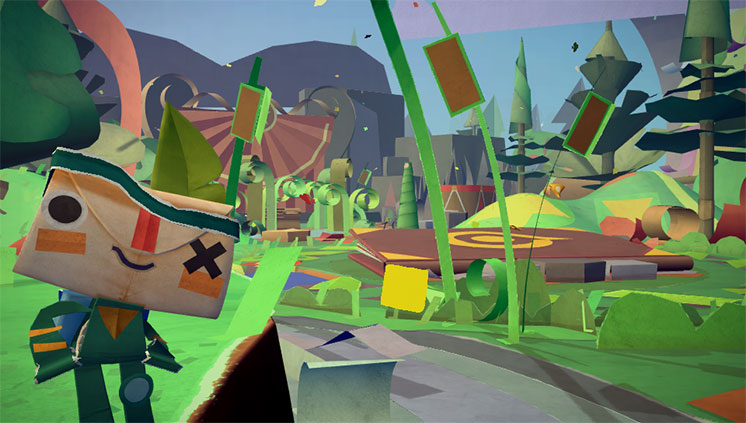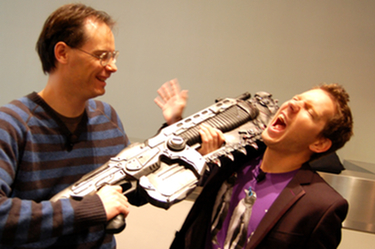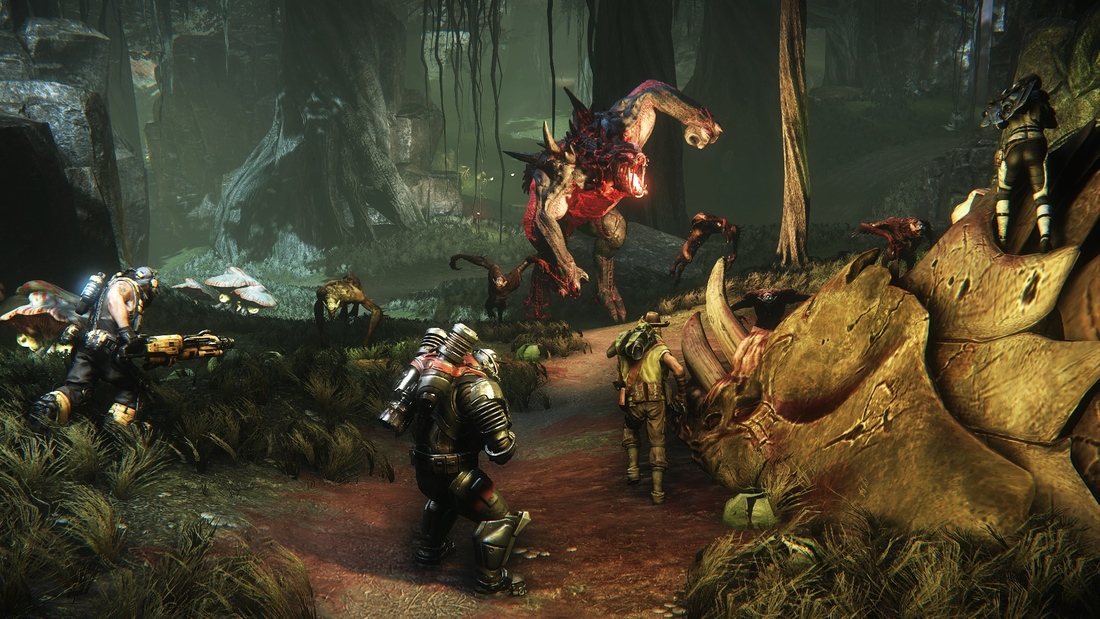By Jamaal Ryan
“Every year is the year of the shooter.”
While this sediment has reigned true for almost the entirety
of last generation, 2014 is a special year for the genre. It’s the first year
of the new console generation, with titles bringing a next gen significance to
each shooter, albeit most of them having current gen counterparts. In addition,
three of the major FPSs launching this year comes to us from established
veteran developers of the genre.
TITANFALL
This past week has been the biggest week for Respawn’s first
born since its debut at E3. The press has spent a significant amount with the
beta version, not to mention the beta has finally gone live to the general
public.
There’s much more to be said about Titanfall than from the
glowing word of mouth of the privileged few. From Ordinances to Burn Cards,
from Data Knives to Smart Pistols, and from Titan and pilot loadouts to
developing battle strategies, we’re finding out more and more about the highly
anticipated shooter very quickly and very close to release.
But what has caused Titanfall’s biggest backlash also raises
the most concern. The game’s AI aren’t flattering to the experience at all,
hanging about and waiting to be shot.
Nonetheless, even as a tinkering beta, Titanfall is showing
great promise. In the seventh year of the annualized tradition that the Call of
Duty series has set, the original visionaries of the most dominant franchise
has finally gotten a chance to offer us something new, something that many Call
of Duty fans have been looking for in years.
EVOLVE
Left 4 Dead was a successful experiment if not a fantastic
co-op experience. The idea of a team of human players working together to face
off against an incessant threat is fairly unoriginal. But it cannot be
understated how dynamic and adaptable AI systems can influence that combat
loop, and that’s what made Left 4 Dead different.
There has to be a joke within the offices of Turtle Rock
studios mocking the “Evolution of Left 4
Dead” quote, but there’s significant meaning behind that rote statement.
Evolve iterates and rewrites the systems that made Left 4
Dead special. Disposable zombies are now replaced with inhabitant wildlife
serving a purpose for both the Hunters and the Monster.
The environments are far bigger and play a crucial role in
being used as a tool for Monsters and Hunters. Car alarms are replaced with
panicked birds that draw the attention of the Hunters. But there are other
means that both parties can use draw each other together or apart.
Classes aren’t just meaningful in Evolve, they’re
imperative. Left 4 Dead’s fairly costume-swap nature has been tossed for 4
essential parts of an operating whole. A team of Hunters cannot function
without the Assault’s high damage output, without the Medic’s team healing
abilities, without the Support’s team buffing contributions, or without the
Trapper’s tracking and enclosure tools.
But the most significant evolution
Evolve offers is infinitely dynamic opponents, or opponent for that matter.
No matter how adaptable the AI can be in Left 4 Dead, none can offer the level
spontaneity as a human player. And while players were able to take on the role
of zombie classes in Turtle Rock’s previous games, Evolve’s three stage Monster
evolution – and the fight to prevent that – keeps battles desperate and tense.
Evolve seeks to redefine an already definitive formula of
the past generation, and this makes it one of the most important shooters of
2014.
DESTINY
Bungie’s latest is destined to be a tall order; Destiny is
shooting to be the most inclusive shooter ever created.
Whether you’re looking for a single player, cooperative, or
competitive experience, whether you’re looking to squeeze in a 20 minute
investment in one sitting, or 20 hours spread across 2 days, Destiny claims it
will have something for you.
As a very independent player, I look forward to making my
way through the universe without being bogged down by others. At the same time,
I can feel free to participate in Destiny’s seamless Public Events and take
part in massive battles against the fascinating war machines and creatures of
Bungie’s new universe.
With games like No Man’s Sky on the horizon, there’s a
rapidly growing mainstream push for exploration driven games thanks to the
capabilities of new hardware; and though Destiny will see 360/PS3 versions,
this new franchise has a long tail that will likely boast a significant
development in both technology and design as the new generation becomes more
dominant.
While Titanfall illustrates Respawn’s Call of Duty legacy,
and Evolve is built on top of the ideas of Left 4 Dead, Destiny is a very
different beast from Halo, putting a huge emphasis on customization than Halo
ever has. This comes from incorporating three Guardian powered classes, incentivized
exploration, and weapon discovery akin to Borderlands. While Borderlands is a
great game, it doesn’t control quite as well as some of the leading shooters in
the genre likely excused for its noncompetitive nature.
Destiny looks to fill that gap, along with building so much
more around the experience.
CALL OF DUTY 2014
Nothing’s known about this year’s Call of Duty other than
its coming. And though for many years, fans such as myself have been convinced
that the NEXT Call of Duty will offer something radically different for the
franchise. However meaningful iterations aside, the doors have yet to have been
blown off since Modern Warfare 2.
I’ll contain my anticipation, but there are considerable
reasons to believe that this year’s installment will offer a drastic change for
Call of Duty. Just as Treyarch has formed their own identity for the franchise,
this year gives Sledgehammer Games a chance to offer their own spin on Call of
Duty, separate from their former colleagues at Infinity Ward.
And Sledgehammer has had quite some time to craft as the
biggest news for the franchise just hit earlier this month that Call of Duty
has moved to a 3 year development cycle. As I’ve said in a recent post, this
gives studios an additional year of development time to brainstorm more
original ideas and more breathing room for polish. Despite critics of the
franchise, Call of Duty studios have done a commendable job (Ghosts aside) in
their two year factory grind. There’s no telling what they’ll be capable of now
with an extra year.
Last, and admittedly least, this will likely be the first
installment to take some noticeable advantage of the new hardware. Earlier this
week, Activision announced that Sledgehammer’s Call of Duty will prioritize
next gen hardware. That could be just watermelon flavored hooka smoke blown up
our asses, but considering the extra development time, and the embarrassing
shift in messaging behind the technology powering Ghosts, from “It’s a new
engine!” to “Well… it’s just a refined version of the older engine” to it
ultimately turning out to be one of the least impressive looking titles across
the Xbox One and PS4, we expect Call of Duty 2014 to be damned impressive
compared to past installments.
By default…
... this will be a considerable year for the genre based on
the simple fact that it will be the first full year shooters are released on
new hardware. But with the exception of Sledgehammer’s Call of Duty, each of
this year’s shooters aren’t only new IPs, but they’re new titles coming from
the people behind Call of Duty 4, Halo, and Left 4 Dead.
While Infamous Second Son and The Witcher 3 will have me mucking
around in sandboxes and action RPGs, most of my gaming time will fall at the
mercy of pulling a trigger.
Writer’s Note: Stay
tuned for Titanfall beta impressions later this week.




















